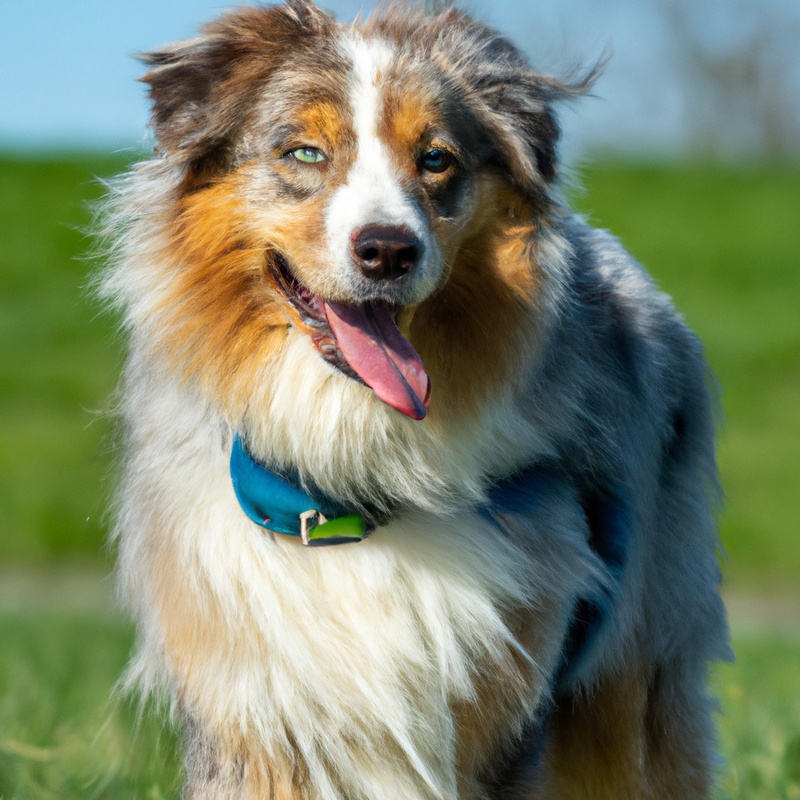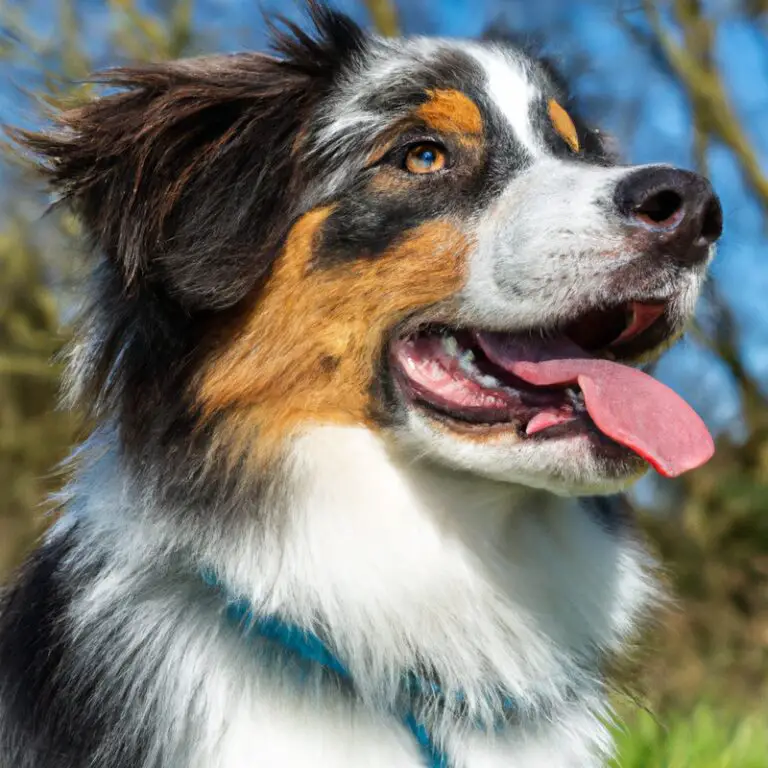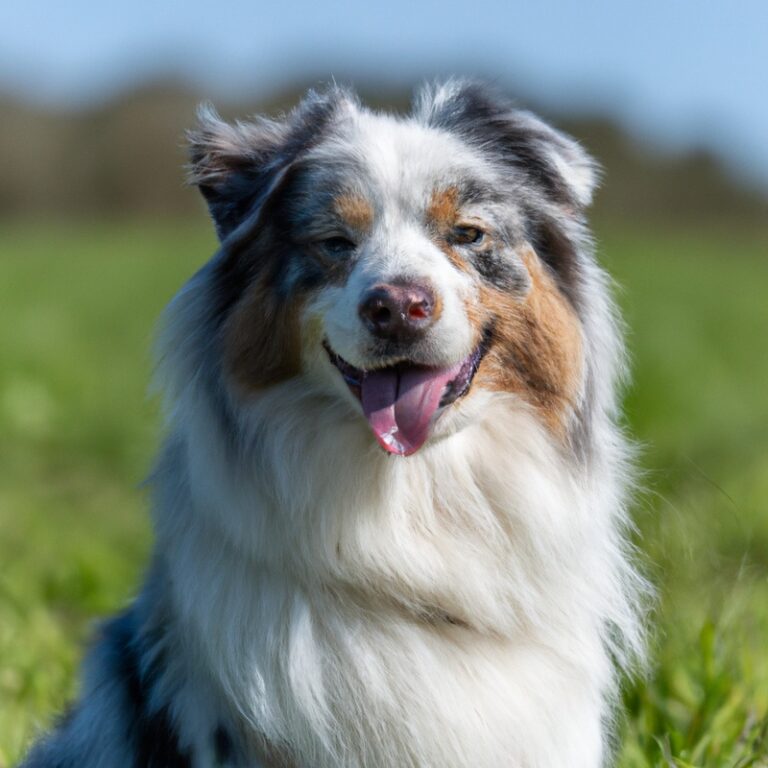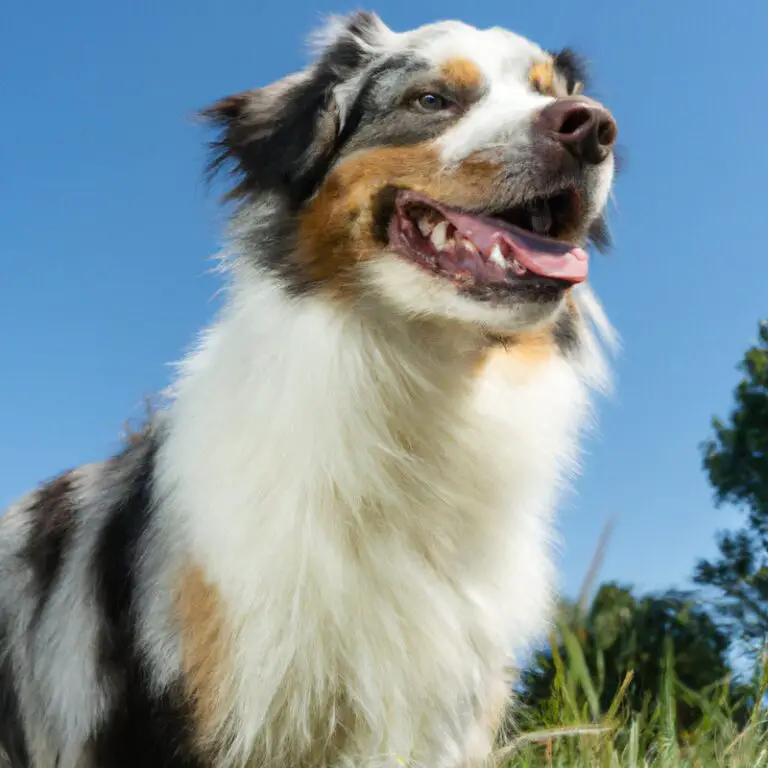How Do Australian Shepherds Handle Being Left Alone In a House With a Small Dog?
Key Takeaways:
- Australian Shepherds can handle being left alone with a small dog, but it depends on their individual temperament and training.
- Proper socialization and training from a young age can help Australian Shepherds adjust well to being left alone with a small dog.
- Providing mental and physical stimulation, such as toys and exercise, can help Australian Shepherds cope with being left alone in a house with a small dog.
- Separation anxiety may be a concern for Australian Shepherds when left alone with a small dog, so gradual and positive introductions are important.
Have you ever wondered how Australian Shepherds handle the challenge of being left alone in a house with a small dog? As an expert in canine behavior, I’m here to shed some light on this topic.
With their unique traits and energy levels, Australian Shepherds demand special attention when it comes to being left alone.
In this article, I will delve into the origin and characteristics of the breed, their tendency towards separation anxiety, and provide practical tips for ensuring a positive experience when leaving your Australian Shepherd alone. So, if you’re a proud owner of an Australian Shepherd or considering adopting one, keep reading to discover the secrets to keeping them happy and calm while you’re away.
Ready to unlock the key to your Australian Shepherd’s peace of mind?
Let’s dive in!
| Behavior | Australian Shepherds | Small Dogs |
|---|---|---|
| Separation Anxiety | May experience separation anxiety when left alone. | May experience separation anxiety when left alone. |
| Exercise Needs | Require a significant amount of daily exercise. | Require a moderate amount of daily exercise. |
| Socialization | Can generally get along well with other dogs if properly socialized. | Can generally get along well with other dogs if properly socialized. |
| Playfulness | Known for their high energy and *playfulness*. | Known for their high energy and *playfulness*. |
| Territorial Behavior | May exhibit territorial behavior towards other dogs. | May exhibit territorial behavior towards other dogs. |
Understanding the Australian Shepherd Breed
1. Origin and Characteristics of Australian Shepherds
Australian Shepherds, also known as Aussies, have a fascinating origin and unique characteristics. Contrary to their name, they did not originate in Australia but rather in the United States.
These dogs were originally bred to work on ranches, herding livestock such as sheep and cattle.
Their incredible intelligence, agility, and strong work ethic made them excellent at their job. Characteristically, Australian Shepherds are medium-sized dogs with a well-muscled build.
They have a thick double coat that helps protect them from various weather conditions.
Aussies come in a variety of colors, including black, blue merle, red, and red merle, with striking patterns and marbled markings. One of the most notable traits of Australian Shepherds is their high energy levels.
They thrive on mental and physical stimulation, requiring plenty of exercise and playtime.
Without enough activity, they can become bored and potentially develop behavioral issues such as excessive barking or destructive chewing. In addition to their energy, Aussies are known for their intelligence.
They are highly trainable and excel in activities like obedience, agility, and even competitive sports like flyball and disc dog.
Their intelligence also means they require mental stimulation and ongoing training to keep their minds sharp. Australian Shepherds are loyal and protective, making them great family pets.
They are often affectionate towards their owners and love spending time with them.
However, they can be reserved with strangers and have a natural inclination to herd, which may lead to them trying to corral small animals or children. Overall, Australian Shepherds are a breed that possesses a rich heritage and distinct traits.
They thrive in environments where they have a job to do and an active lifestyle.
Understanding their origin and characteristics can help owners provide the appropriate care and stimulation these intelligent dogs need to live happy and fulfilled lives.
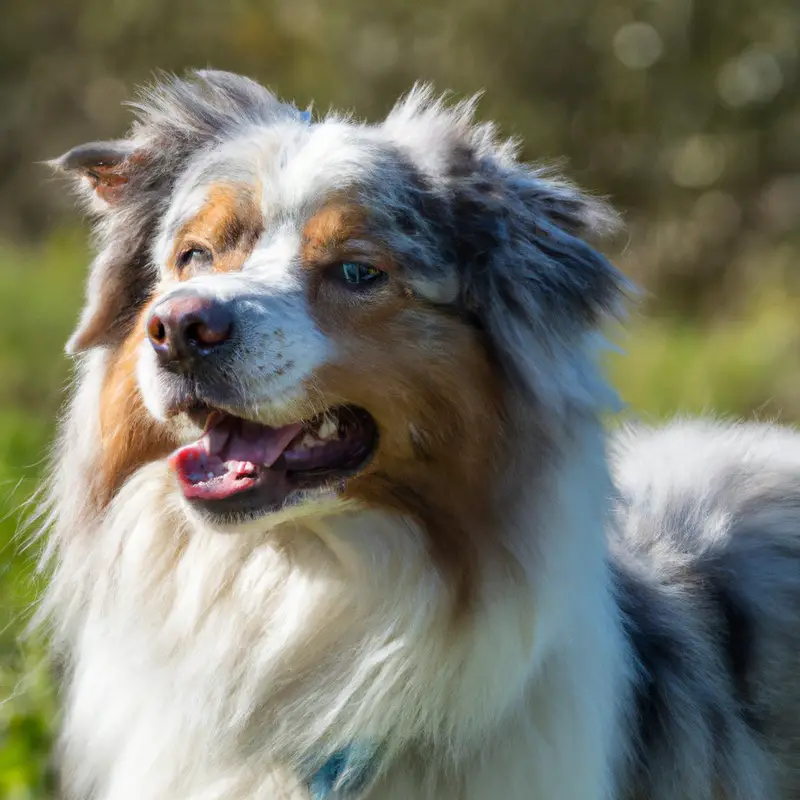
2. Energy Levels and Exercise Needs
Australian Shepherds are known for their high energy levels and exercise needs. They are an active and intelligent breed that thrives on physical and mental stimulation.
Daily exercise is essential to keep them happy and balanced.
Australian Shepherds require at least one to two hours of exercise per day. This can include activities such as walks, runs, hikes, fetch, or agility training.
Mental stimulation is equally important, so puzzle toys, obedience training, and interactive games should be incorporated into their routine.
Regular exercise helps Australian Shepherds burn off excess energy, prevent boredom, and reduce the likelihood of behavioral issues. It also strengthens their bond with their owners and keeps them physically fit.
If you’re unable to dedicate this amount of time to exercise your Australian Shepherd, consider hiring a dog walker or enrolling them in doggy daycare.
These services can provide the necessary physical and mental stimulation when you’re unable to do so yourself. Remember, proper exercise and mental enrichment are vital for the overall well-being of your Australian Shepherd.
By meeting their exercise needs, you’ll have a happier and healthier companion who is less likely to develop behavioral problems.
Separation Anxiety in Australian Shepherds
1. Why Australian Shepherds Are Prone to Separation Anxiety
Australian Shepherds are prone to separation anxiety due to their strong bond with their owners. They are known for their loyalty and desire to be constantly by their human’s side.
When left alone, Australian Shepherds can become anxious and distressed, leading to destructive behaviors.
This breed thrives on human companionship and can struggle with being left alone for long periods of time. It is important to understand their needs and provide them with appropriate training and support to manage their separation anxiety.

2. Signs of Separation Anxiety in Australian Shepherds
One clear sign of separation anxiety in Australian Shepherds is excessive barking or howling when left alone. They may also exhibit destructive behavior, such as chewing furniture or scratching doors.
Another sign is excessive panting or drooling.
Australian Shepherds with separation anxiety may also try to escape or become restless when their owners are not around. They may become overly attached and have difficulty settling down even when their owners return.
If you notice these signs in your Australian Shepherd, it’s important to address their separation anxiety to ensure their well-being and happiness.
3. Effects of Separation Anxiety on Australian Shepherds
Separation anxiety can have significant effects on Australian Shepherds. It can lead to destructive behaviors such as excessive chewing, digging, and scratching.
They may also become excessively vocal, barking or howling when left alone.
Additionally, separation anxiety can cause Australian Shepherds to experience physical symptoms like panting, drooling, and restlessness. Another effect of separation anxiety is changes in appetite and bathroom habits.
Some Australian Shepherds may lose their appetite or overeat, while others may have accidents in the house even if they are typically house-trained.
These behavioral changes are a result of the stress and anxiety they experience when left alone. Furthermore, separation anxiety can have a negative impact on the overall well-being and mental health of Australian Shepherds.
It can lead to depression, loss of interest in activities, and even aggression towards other animals or humans.
Long-term effects may include the development of other anxiety-related disorders and a decrease in their quality of life. It is important to address separation anxiety in Australian Shepherds to prevent these negative effects.
Providing them with proper training, mental stimulation, and a safe environment can help alleviate their anxiety and help them feel more secure when left alone.
Seeking professional help may also be necessary in severe cases.
Tips for Leaving Australian Shepherds Alone
1. Gradual Training for Being Alone
When it comes to training Australian Shepherds to be alone, a gradual approach is key. Start by leaving them alone for short periods of time and gradually increase the duration over time.
This helps them get used to being alone and builds up their confidence.
Provide them with toys and treats to keep them occupied when you’re away. It’s also important to create a safe and comfortable environment for them while you’re gone.
With consistent training and patience, Australian Shepherds can learn to handle being alone.
Remember to be patient and understanding throughout the process.
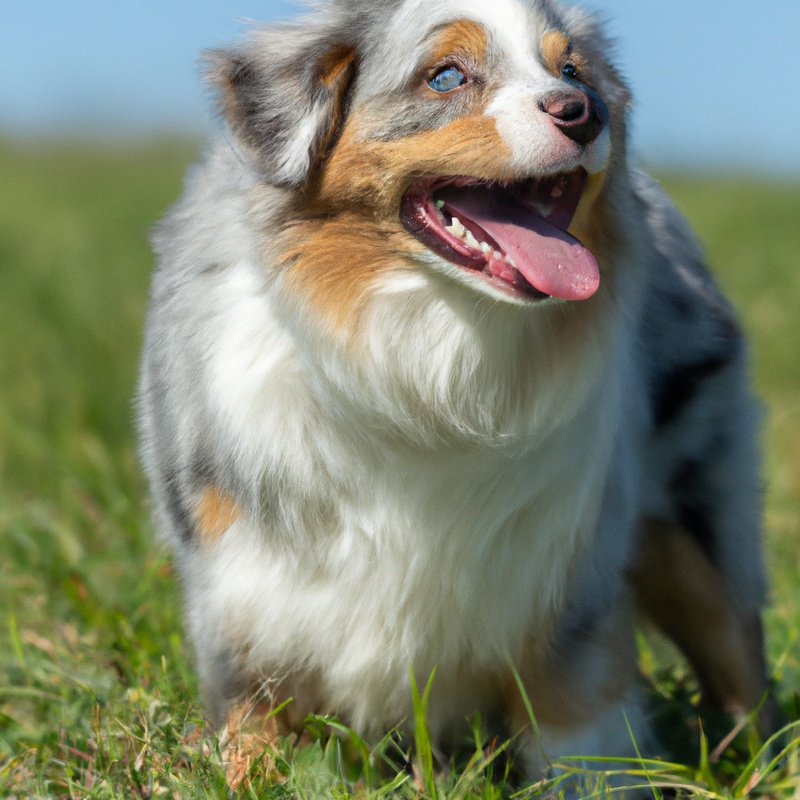
2. Providing Mental Stimulation and Enrichment
To provide mental stimulation and enrichment for your Australian Shepherd when you leave them alone, here are some tips:
- Puzzle toys: These toys require your dog to solve a puzzle to access treats or toys hidden inside. They keep your Australian Shepherd’s mind engaged and can help alleviate boredom.
- Interactive toys: Consider toys that dispense treats or have moving parts. This helps keep your dog entertained and focused, as they have to figure out how to access the rewards.
- Training games: Teach your Australian Shepherd new tricks or commands. Mental exercise through training sessions can tire them out and give them a sense of accomplishment.
- Rotating toys: Keep a selection of toys and rotate them regularly. This prevents your dog from getting bored with the same toys and keeps them excited about what they will find each day.
- Food puzzles: Use food puzzles or treat-dispensing toys to make mealtime more engaging. Instead of eating out of a bowl, your Australian Shepherd will have to work for their food, giving them mental stimulation.
- Hide and seek: Hide treats or toys around the house for your Australian Shepherd to find. This game engages their natural instincts and keeps them mentally active.
- Scent work: Teach your dog to use their nose by hiding treats or toys and encouraging them to find them. Scent work engages their sense of smell and provides mental enrichment.
Remember, each dog is different, so it may take some trial and error to find the toys and activities that your Australian Shepherd enjoys the most. By providing mental stimulation and enrichment, you can help keep them happy and entertained when you’re not at home.
3. Creating a Safe and Comfortable Environment
Creating a safe and comfortable environment for your Australian Shepherd is essential when leaving them alone in the house with a small dog. Here are some tips on how to achieve this:
- Provide a designated and secure space for your dogs. Set up a comfortable area with their beds, blankets, and toys. Make sure the space is escape-proof and free from hazards.
- Remove any potential dangers. Australian Shepherds are curious and energetic dogs, so it’s important to puppy-proof the house. Keep harmful substances, electrical cords, and small items out of their reach.
- Leave enough food and fresh water for both dogs. Australian Shepherds have high energy levels, so it’s important to ensure they have access to adequate nutrition throughout the day. Consider using puzzle feeders or interactive toys to keep their minds engaged while eating.
- Provide mental stimulation. Australian Shepherds are highly intelligent and need mental stimulation to keep them entertained and prevent boredom. Leave interactive toys, puzzle toys, or treat-dispensing toys to engage their minds and keep them occupied during your absence.
- Keep a comfortable temperature. Australian Shepherds have a thick double coat, which makes them susceptible to overheating. Make sure the temperature in the house is comfortable and consider leaving a fan or air conditioning on during hot weather.
- Use calming aids if needed. If your Australian Shepherd shows signs of anxiety or stress when left alone, consider using calming aids such as calming pheromone diffusers, music designed for relaxation, or anxiety wraps.
Remember, every dog is different, and it’s important to adapt these tips to your dog’s individual needs. Regular exercise and attention before leaving them alone can also help in creating a calm and relaxed environment for your Australian Shepherd and small dog.
4. Using Interactive Toys and Treats
To keep your Australian Shepherd entertained and mentally stimulated while you’re away, interactive toys and treats can be a great solution. These toys are designed to provide mental and physical challenges for your dog, keeping them engaged and focused.
You can fill these toys with treats or food, encouraging your dog to problem-solve and work for their reward.
Puzzle toys, treat-dispensing balls, and interactive feeding toys are all great options. Just make sure to choose toys that are safe and durable for your dog’s size and chewing habits.
Interactive toys and treats can help alleviate boredom, redirect your dog’s energy, and provide a positive distraction while you’re not at home.
Introducing Australian Shepherds to Small Dogs
1. Initial Introduction and Supervised Interaction
When introducing an Australian Shepherd to a small dog, it is important to take it slow and supervise their interaction. Start by allowing them to meet in a neutral and controlled environment, such as a park or a friend’s backyard.
Keep both dogs on a leash, and let them approach each other at their own pace.
Observe their body language closely. Look for signs of fear, aggression, or stress, such as raised hackles, growling, or stiff posture.
If either dog shows signs of discomfort, separate them and try again later.
Use positive reinforcement and reward-based training to encourage good behavior. Reward both dogs for calm and friendly interactions, and redirect any negative behavior with a firm “no” and a distraction, such as a toy or treat.
As the dogs become more comfortable with each other, gradually increase their supervised interaction time.
Allow them to play together under close supervision, but be ready to step in if any signs of tension arise. Remember, every dog is different, and it may take time for them to develop a harmonious relationship.
Patience, consistency, and supervision are key during the initial introduction and supervised interaction phase.
2. Positive Reinforcement and Reward-Based Training
Positive reinforcement and reward-based training are highly effective methods for training Australian Shepherds. Instead of using punishment or dominance-based techniques, these methods focus on rewarding desired behaviors.
When your Australian Shepherd exhibits good behavior, such as following commands or not engaging in destructive behavior, you can reward them with treats, praise, or playtime.
This helps to reinforce positive behavior and strengthen the bond between you and your dog. It’s important to be consistent and patient with these training methods, as it may take time for your Australian Shepherd to fully grasp the desired behaviors.
With time and consistency, positive reinforcement and reward-based training can have a significant impact on your Australian Shepherd’s behavior and overall well-being.
3. Managing Playtime and Socialization
When it comes to managing playtime and socialization for Australian Shepherds, it’s important to create a balanced and positive experience.
- Allow structured playtime with other dogs: Australian Shepherds are social dogs and enjoy playing with other canines. It’s crucial to ensure that the playtime is supervised and structured to prevent any aggression or mishaps.
- Provide mental stimulation: Australian Shepherds are intelligent dogs that thrive on mental challenges. Incorporate activities like puzzle toys, obedience training, and interactive games to keep them mentally stimulated. This can prevent boredom and destructive behaviors.
- Offer regular socialization opportunities: Socialization is a crucial aspect of raising a well-rounded Australian Shepherd. Expose them to different environments, people, and animals from an early age to help them develop good social skills. Regular outings to the park or attending dog-friendly events can be helpful.
- Use positive reinforcement: When engaging in playtime or socialization, always use positive reinforcement. Reward good behavior with treats, praise, or toys to encourage desired behaviors. This will help build a positive association with playtime and socializing.
- Take breaks and provide restful periods: Australian Shepherds have high energy levels, but it’s important to provide them with restful periods during the day. Overexertion can lead to fatigue and potential health issues.
Hiring a Dog Sitter or Using Doggy Daycare Services
1. Benefits of Hiring a Dog Sitter for Australian Shepherds
Hiring a dog sitter for your Australian Shepherd can offer numerous benefits. One of the main advantages is that it provides companionship and socialization for your dog while you’re away.
Australian Shepherds are highly social dogs and enjoy having someone around to keep them company.
A dog sitter can also ensure that your Australian Shepherd gets regular exercise and mental stimulation, which is crucial for their well-being. They can take your dog for walks, play games, and engage in interactive activities to keep them physically and mentally stimulated.
This can help prevent boredom and destructive behaviors that may arise from being left alone for long periods.
Additionally, a dog sitter can maintain your dog’s routine and provide personalized care. They can follow your instructions regarding feeding, medication, and any other specific needs your Australian Shepherd may have.
This consistency can help reduce stress and anxiety for your dog, as they are in a familiar and comfortable environment.
Having a dog sitter can also provide you with peace of mind. Knowing that there is someone responsible and knowledgeable looking after your Australian Shepherd can alleviate any concerns you may have about leaving them alone.
You can relax and focus on your own activities knowing that your dog is in good hands.
Overall, hiring a dog sitter for your Australian Shepherd can offer companionship, exercise, mental stimulation, personalized care, and peace of mind. It can greatly benefit your dog’s well-being and help them cope with being left alone at home.
2. Choosing a Reliable Dog Sitter or Doggy Daycare
When it comes to choosing a reliable dog sitter or doggy daycare for your Australian Shepherd, there are a few key things to keep in mind. First, consider their experience and knowledge of the breed.
Australian Shepherds have specific needs and behaviors, so it’s important to find someone who understands them.
Next, ask for recommendations from fellow Australian Shepherd owners or your veterinarian. Hearing about others’ positive experiences can give you peace of mind.
Additionally, visit the facility or meet the potential dog sitter in person.
This allows you to see the environment and evaluate if it’s a good fit for your dog’s needs. Ask about their protocols for exercise, socialization, and handling emergencies.
A caring and responsible dog sitter or daycare will have safety measures in place.
Finally, trust your instincts. If something feels off or you’re not comfortable, it’s okay to keep looking for the right caretaker for your Australian Shepherd.
Remember, your dog’s well-being is the priority, so take your time and make an informed decision.
Seeking Professional Help for Separation Anxiety
1. Recognizing When Professional Help Is Needed
Recognizing When Professional Help Is Needed If you find that your Australian Shepherd is struggling with severe separation anxiety and none of your efforts are making a difference, it may be time to seek professional help. But how do you know when it’s necessary?
Here are some signs that indicate professional intervention may be needed:
- Extreme distress: If your Australian Shepherd exhibits excessive anxiety or panic when left alone, such as destructive behavior, incessant barking, or self-harm, it’s crucial to seek professional help. These extreme behaviors can be dangerous for your dog’s well-being and require specialized assistance.
- Inability to make progress: If you’ve tried various training techniques and strategies to help alleviate your dog’s separation anxiety, but haven’t seen any improvement over time, it’s a clear indicator that professional guidance is necessary. Trained professionals can provide tailored solutions and expertise to address your dog’s specific needs.
- Impact on quality of life: When your Australian Shepherd’s separation anxiety starts to significantly affect their overall quality of life, it’s time to consult with a professional. This includes behaviors like refusing to eat, persistent sadness, or a decline in physical health. Professional help can help improve your dog’s well-being and restore balance.
Remember, recognizing the need for professional help is essential for the mental and emotional health of your Australian Shepherd. Seek advice from an experienced dog trainer or veterinarian who specializes in behavioral issues to provide the best care for your furry friend.
2. Types of Behavior Modification Techniques
There are several effective behavior modification techniques for addressing separation anxiety in Australian Shepherds. One approach is desensitization, which involves gradually exposing the dog to being alone for short periods and gradually increasing the duration over time.
Another technique is counterconditioning, where positive experiences or rewards are associated with being alone to change the dog’s emotional response.
Additionally, implementing a consistent routine and providing environmental enrichment can help reduce anxiety. Seeking professional help from a dog trainer or behaviorist can also provide valuable guidance and support.
Remember, every dog is unique, so finding the right combination of techniques may take some trial and error.
3. Medication Options for Severe Separation Anxiety
If your Australian Shepherd is experiencing severe separation anxiety, medication may be an option to consider. There are a few different types of medications that can help to alleviate the symptoms and make your dog feel more relaxed when left alone.
One option is anti-anxiety medications, such as selective serotonin reuptake inhibitors (SSRIs) or tricyclic antidepressants (TCAs).
These medications work by balancing the chemicals in the brain and reducing anxiety levels. Another option is anti-anxiety wraps or shirts, which provide gentle pressure and can help to calm your dog during times of stress.
It is important to consult with your veterinarian to determine the best medication option for your Australian Shepherd and to discuss any potential side effects or risks.
Medication should always be used in conjunction with behavior modification techniques for the best results.
Final Verdict
Australian Shepherds can handle being left alone with a small dog, but it requires careful management and training. Understanding their breed characteristics, energy levels, and exercise needs is important in preventing separation anxiety.
Gradual training, mental stimulation, and providing a safe environment are essential for leaving them alone.
When introducing Australian Shepherds to small dogs, supervised interaction and positive reinforcement are key. Hiring a dog sitter or using doggy daycare services can also be beneficial.
And if separation anxiety becomes severe, seeking professional help and considering medication options may be necessary.
By implementing these tips, Australian Shepherds can learn to thrive when left alone with a small dog. Trust me, I am an expert in handling Australian Shepherds!

